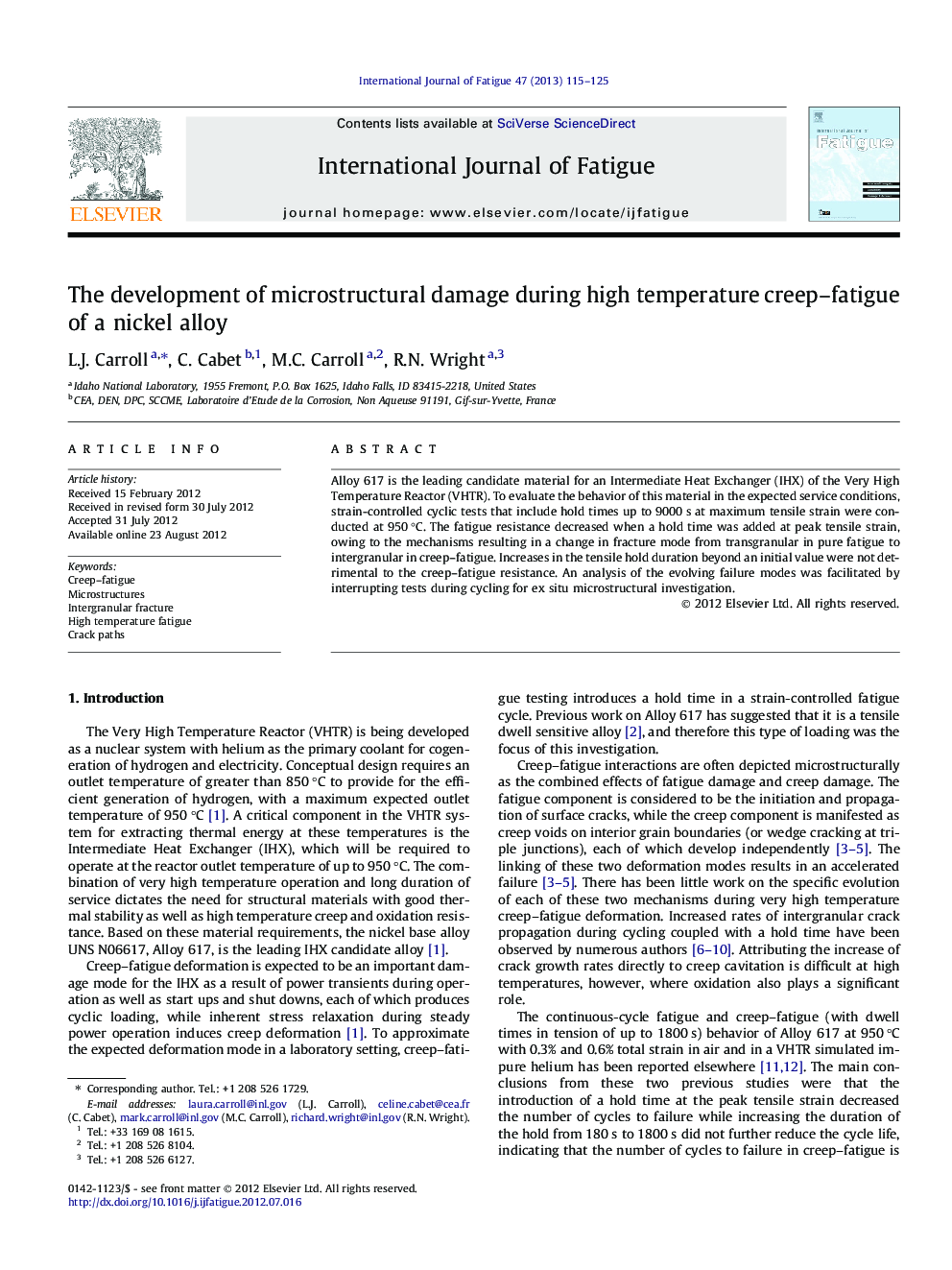| Article ID | Journal | Published Year | Pages | File Type |
|---|---|---|---|---|
| 780922 | International Journal of Fatigue | 2013 | 11 Pages |
Alloy 617 is the leading candidate material for an Intermediate Heat Exchanger (IHX) of the Very High Temperature Reactor (VHTR). To evaluate the behavior of this material in the expected service conditions, strain-controlled cyclic tests that include hold times up to 9000 s at maximum tensile strain were conducted at 950 °C. The fatigue resistance decreased when a hold time was added at peak tensile strain, owing to the mechanisms resulting in a change in fracture mode from transgranular in pure fatigue to intergranular in creep–fatigue. Increases in the tensile hold duration beyond an initial value were not detrimental to the creep–fatigue resistance. An analysis of the evolving failure modes was facilitated by interrupting tests during cycling for ex situ microstructural investigation.
► The creep–fatigue cycle life of Alloy 617 at 950 °C is lower than standard fatigue. ► Crack propagation modes are decidedly different between fatigue and creep–fatigue. ► Oxidation of grain boundaries plays a role in creep–fatigue surface crack initiation. ► Fine interior grain boundary cracking is observed only in creep–fatigue. ► Interrupted tests reveal ex situ progression of surface and interior cracking.
